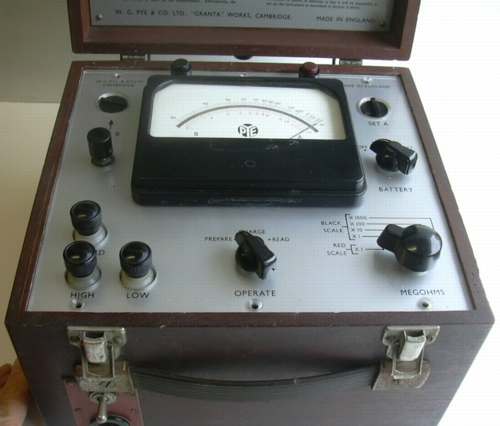

PYE High Resistance test set housed in wooden box. This test set was given to me by Eric Lawrence who had had it in his garage for many years.
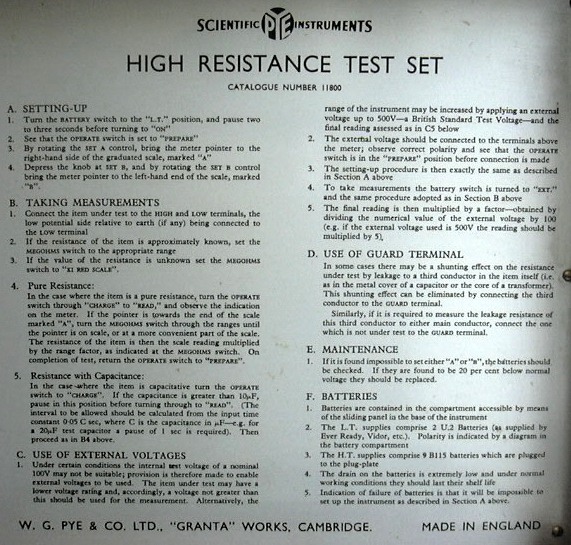
Operating Instructions in the lid. This instrument can measure insulation resistances in excess of 200 000 megohms! It incorporates a very high input impedance two valve voltmeter. Hidden inside the box was a copy of the circuit diagram indicating that it must have been manufactured after 1957, though confusingly the copy has been rubber stamped 1 NOV 1967.
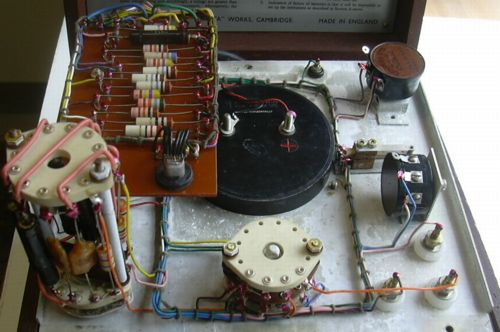
Internal view. Note wire ended valve mounted through the Bakelite tag strip, the second valve is hidden by the switch.
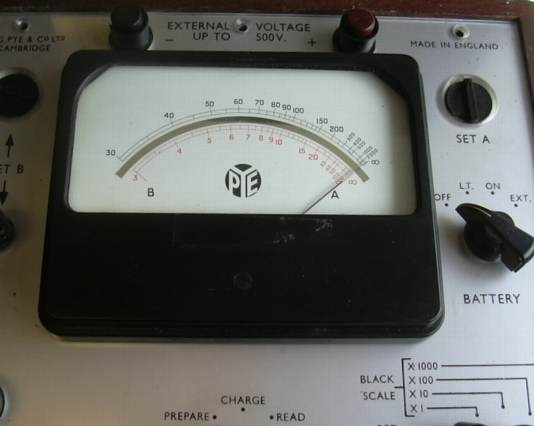
The instrument had been stored in rather damp conditions and there were signs of corrosion on the metalwork. After finding a knob which would fit the range change switch and making up a lead with a Bulgin plug I tried energising it via my variac but nothing happened because one pole of the toggle switch steadfastly remained open circuit. After replacing this I found that the meter movement was open circuit but I established that the instrument apparently functioned by connecting my AVO across its terminals.
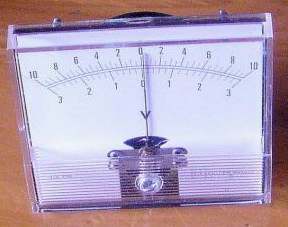
I bought this 50-0-50 microamp meter on Ebay and with a little modification (soldering a short length of fine wire to the hairspring) was able to get it to zero on the right hand end of the scale.I scanned the original scale and adjusted the size to suit the smaller meter. My replacement meter required about 130 microamps to provide full scale deflection on my new scale. By reducing the resistance in series with the meter I was able to get the new meter to zero and correctly meet the calibration points on the scale.
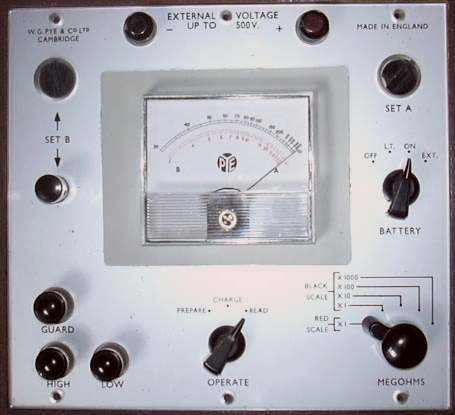
This is how the instrument now looks with the replacement meter. I have placed a thin sheet of grey plastic behind the meter to cover the hole left by the original,larger meter. I have only tested it on the lower ranges because I only had eight 10 megohm resistors. Once the instrument has warmed up and been zeroed the meter read as expected.
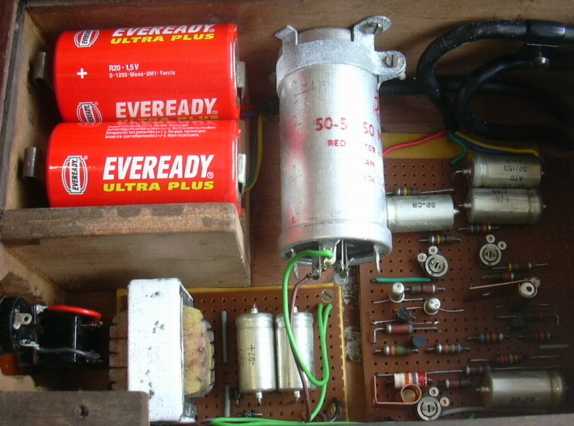
The instrument requires two 1.5 volt cells (one for each valve filament) and 3 HT supplies (67.5 112.5 and 22.5 volts). The latter would have been provided by 9 type B115 batteries. Fortunately the previous owner has made a battery replacement. A pencil sketch of the circuit was found in the battery compartment.

